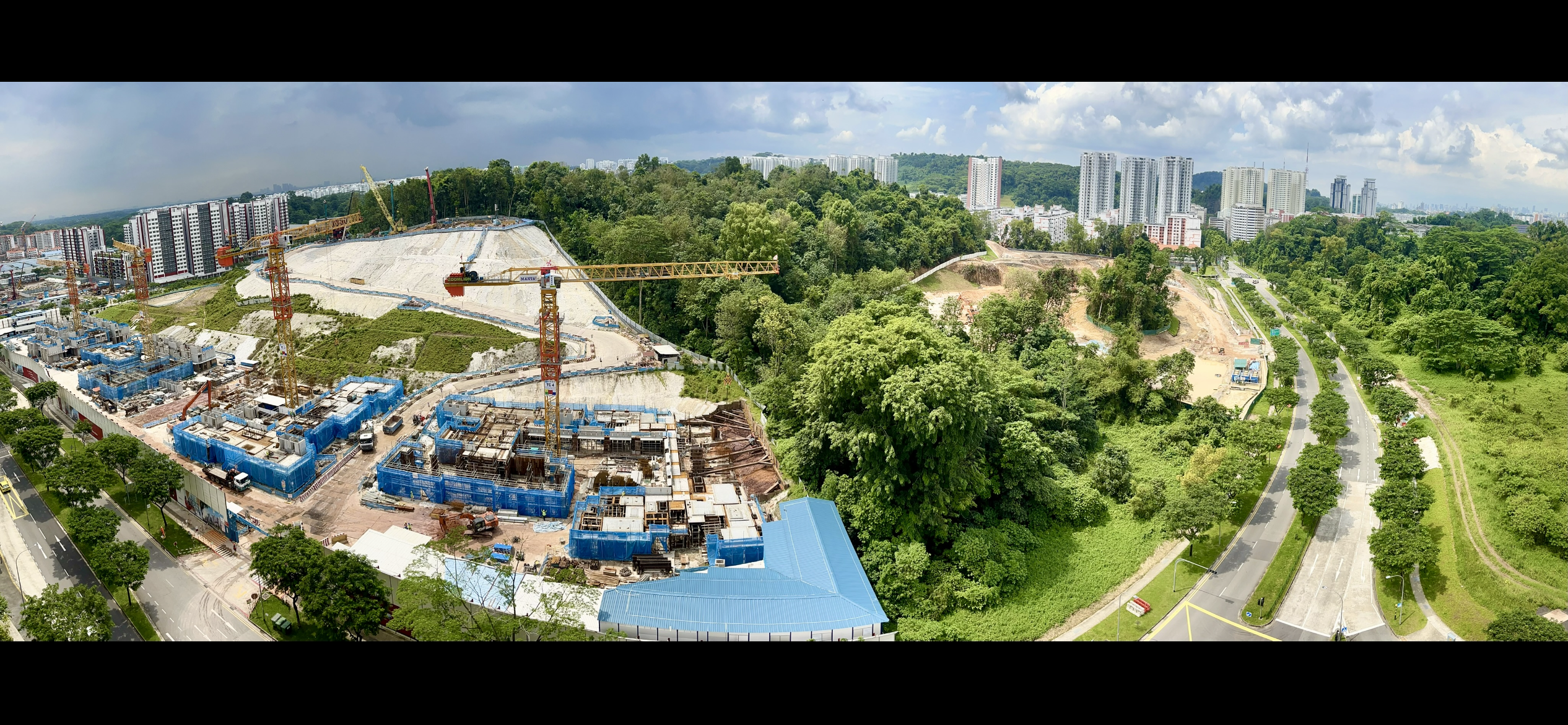
I borrowed a book called “Dynamic Environments of Singapore” by Daniel Friess and Grahame Oliver (published in 2015) from a public library recently, which I find quite informative, though slightly dense.
Here’s sharing some noteworthy details:
- The oldest dated rock in Singapore is the Gombak Gabbro (260 million years old, +/- 2 million years).
- Singapore is situated at the southern terminus of the Indosinian Mountain Belt formed around 220 to 200 million years ago.
- Bukit Mandai, Bukit Batok and Bukit Timah are made of igneous rocks such as Bukit Timah Granite and Gombak Gabbro. These hills above 100 m form the highest relief in Singapore.
- Slope failure in Singapore often occurs during the wet monsoon period on steep topography, where the forest has been removed and where slopes have been engineered for building purposes (e.g. slope failure at Mount Faber in June 2013).
- Though Singapore barely has any agriculture, soils are essential to support vegetation growth in the green areas (e.g. Central Catchment, nature reserves, parks, gardens, open green areas) and to sequester carbon.
- Mudflats are a rare habitat type in Singapore, with one of the best examples found in northwest Singapore, fronting Mandai Mangrove. This is a key habitat for the endangered Mangrove Horseshoe Crab.
- Singapore’s subtidal habitats are threatened by local changes in biophysical conditions, such as reclamation and dredging, as well as regional and global-scale changes such as ocean acidification.
- Some species, especially mammals, have large home ranges, and each individual requires a minimum area of habitat to support a viable population. If a habitat patch is smaller than this minimum area, local extinctions may occur.
- In July 2013, The Straits Times reported that almost 360 macaques (20% of the national population) were culled in the first 6 months of the year in response to complaints by residents…. Sha et al. (2009) recommended better land use planning (e.g. leaving a forest buffer zone instead of developing right up to the boundary of the Nature Reserve) and increased public education to manage potential human-macaque conflict.
- Singapore’s habitats are extremely patchy and fragmented. A number of actions can be taken to address this. Firstly, existing habitat fragments should be protected under law to ban new development and reduce further fragmentation. Secondly, developed areas could be converted back to natural habitats through habitat restoration. This option would increase the size of current habitat patches, reducing the impact of edge effects. If planned correctly, it could also improve the connectivity of current habitat patches.
- Green space provision utilises the biophysical watershed protection value of green spaces (e.g. filtration – water quality) and the interception and infiltration benefits of green spaces (water quantity).
- If we effectively incorporate green spaces into building and land use planning, we may be able to reduce surface air temperatures and energy demand (from air-conditioning). This should not be purely seen as a gardening project; we need a concerted effort to understand and attempt to replicate the biophysical functions of green spaces.
- Species endemic to Singapore include the Singapore Whiskered Bat and the Singapore Freshwater Crab, a critically endangered crab species only discovered in 1986, and only found in streams near Bukit Timah and Bukit Gombak. These species are at great risk of extinction as they are found exclusively in Singapore and nowhere else.
Which of these points stands out for you the most?

For me, the first two points particularly stand out because they remind me that the Singapore story can be told through the rocks.
For example, the story of Singapore began millions of years ago when the island was formerly part of a huge landmass before plate tectonic forces, sea level changes, weathering and erosion etc shaped it to its present state, where anthropogenic factors have recently been making dynamic changes in the past couple of centuries as well.

P.S. On a similar note, SG Climate Rally is co-organising an event called Deep Time Walk this coming Sunday (17 March 2024). If you are interested, please click here for more information.
P.P.S. My debut poetry book “Nature Sketch: A poem about the Twelve Apostles in Victoria, Australia” is about ancient rocks too. Feel free to check it out here.

Leave a comment